Many parents and teachers worry when they hear the words preschool curriculum.
Should it be academic? Should it be play-based? Do I need a full kit, or can I just print some worksheets? And how do I know what’s right for a 3-year-old, or a 4-year-old?
That pressure is real.
These days, you’re surrounded by options: Montessori preschool curriculum, Waldorf, homeschool preschool curriculum kits, bible-based preschool curriculum, and more. Some are expensive. Some are confusing. And most leave you wondering if you’re doing enough—or too much.
Here’s the truth:
A good preschool curriculum isn’t about having fancy materials or following a rigid academic path. It’s about helping your child grow in every area—thinking, talking, moving, creating, feeling, and connecting.
This guide will walk you through everything you need to know:
- And how to choose or build one that works for your child—at home or in the classroom
- What a preschool curriculum really is
- What it should include
- How top education methods differ (Montessori, Reggio Emilia, and others)
- What kind of curriculum is best for different age groups
What Is a Preschool Curriculum?
A preschool curriculum is a flexible plan that guides what young children learn and experience each day. It’s not about worksheets or memorizing facts. It’s about helping children grow in all areas—thinking, talking, playing, solving problems, and building relationships.
At the 2-5 age, kids learn best through play, movement, stories, and real-world exploration. That’s why a good preschool curriculum includes a mix of language activities, early math, hands-on science, creative play, and time to build social skills.
Some curricula are structured, like the Montessori preschool curriculum or the Creative Curriculum for Preschool. Others are more open-ended, such as Reggio Emilia or nature-based preschool curriculum programs. There are also many families using a preschool homeschool curriculum, creating simple learning routines at home with books, games, and outdoor play.
No matter the style, the purpose stays the same: to support your child’s development and love of learning.
If you’re teaching at home or choosing a program for a preschool, what matters most is that the curriculum fits your child’s age, allows for flexibility, and includes a balance of learning and fun.
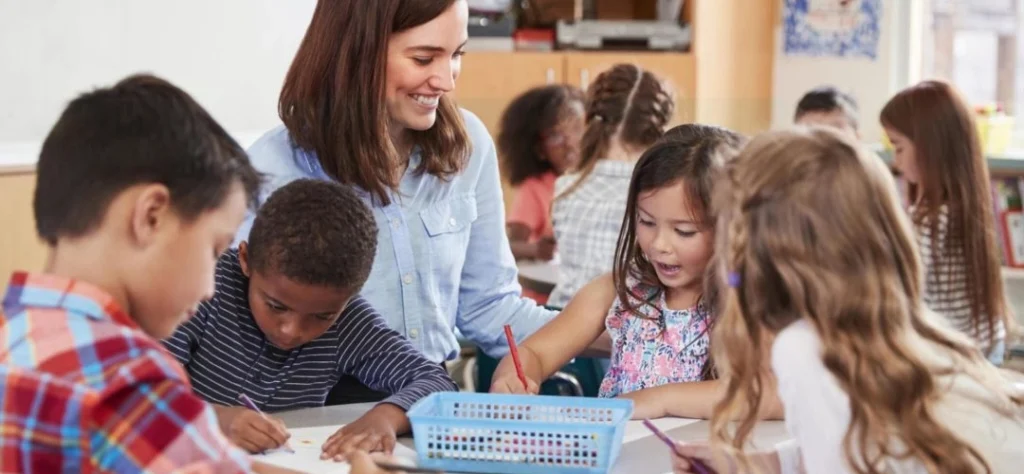
What Should a Preschool Curriculum Include?
A good preschool curriculum doesn’t focus on just one thing. It doesn’t just teach the ABCs or basic counting. Instead, it gives children a wide range of experiences to help them grow in different areas—step by step, at their own pace.
Let’s look at the key parts that every strong preschool curriculum should include.
Language and Communication
Before children learn to read or write, they need to listen, speak, and understand.
A well-rounded preschool literacy curriculum builds these early language skills through stories, songs, conversations, and playful reading games.
For example, during a simple read-aloud session, children not only hear new words but also learn how stories work. When they talk about the pictures, act out parts of the book, or retell the story in their own words, they’re building memory, sequencing, and vocabulary.
Many homeschool preschool curriculum kits offer daily story time prompts, phonics games, and tracing activities. But even without a kit, parents can create rich language experiences with books, rhymes, and regular conversation.
Early Math Skills
You don’t need flashcards or worksheets to teach math in preschool. What you do need is the chance to count, compare, and play with shapes and patterns.
A solid preschool math curriculum helps children:
- Count objects and understand quantity
- Recognize simple numbers and number words
- Sort and group by color, size, or type
- Begin to see patterns and sequences
This can happen during snack time (“You have 3 crackers”), during cleanup (“Let’s put all the red toys together”), or while building towers and puzzles.
Many printable preschool curriculum resources include counting mats, shape scavenger hunts, and number songs—great tools for learning through play.
Whether you’re using a Montessori preschool curriculum, which introduces numbers through tactile materials, or a more traditional preschool homeschool curriculum, math should always be hands-on and meaningful.
Science and Discovery
Children are naturally curious. A good preschool curriculum encourages curiosity and turns it into learning.
Science at this age isn’t about facts—it’s about observation and exploration. A strong preschool science curriculum allows kids to:
- Ask questions like “What happens if I mix these?”
- Explore nature, weather, and animals
- Try basic experiments (Does it float? Will it grow?)
If you’re using a nature-based preschool curriculum or even designing your own at home, science might look like watching ants in the garden, planting seeds, or playing with ice and water.
Even something as simple as baking together teaches cause and effect, measurement, and temperature—all real science, just in everyday life.
Social and Emotional Growth
At preschool age, learning how to get along with others is just as important as learning numbers or letters.
A child who can take turns, express their feelings, and ask for help is ready to thrive in any learning environment.
That’s why social-emotional learning is a key part of most preschool curriculum programs. Some structured approaches, like the Second Step Curriculum Preschool, offer specific lessons about kindness, listening, and managing frustration. But you don’t need a full program to teach these skills.
Simple activities like role-playing, talking about emotions, and reading stories with strong characters help children understand themselves and others.
In a good preschool homeschool curriculum, these lessons often happen during play. When a child shares a toy, solves a problem with a sibling, or comforts a friend, they’re learning how to be part of a community.
Art, Music & Creative Expression
Art and music are not just for fun—they are vital parts of a well-rounded preschool curriculum. Through creative expression, children learn to share their ideas, feelings, and imagination in ways that words often can’t capture.
When a child paints with their fingers, bangs a drum, or dances to a rhythm, they’re doing more than just playing—they’re building fine motor skills, developing a sense of pattern and beat, and gaining confidence in expressing themselves. These activities support both brain development and emotional growth.
A quality preschool art curriculum doesn’t focus on “perfect” results. Instead, it offers open-ended projects—drawing, painting, gluing, and building—that encourage creativity and exploration. In many play-based preschool curriculum models, children are given a wide variety of materials like clay, recycled paper, markers, or nature items to create freely.
Similarly, a strong preschool music curriculum introduces rhythm, sound, and movement in simple, joyful ways. Singing familiar songs, experimenting with instruments, and moving to music help children develop listening skills, coordination, and early math concepts like counting beats or following a pattern.
Whether you’re using a Montessori preschool curriculum (which may include bells, color-coded notes, or movement games) or designing your own homeschool preschool curriculum, creative activities should be part of the daily experience.
Physical Development
Preschoolers are movers. Climbing, jumping, running, catching, stacking, drawing—these movements aren’t just for fun. They’re how young children develop control over their growing bodies.
A strong preschool curriculum builds both gross motor skills (big movements like hopping or balancing) and fine motor skills (small, precise actions like using scissors or stringing beads). These skills support everything from physical health to handwriting readiness.
Outdoor time is especially important. Whether it’s a nature-based preschool curriculum that includes climbing logs and digging in the dirt, or a preschool homeschool curriculum with backyard play, children need daily chances to move freely and safely.
Inside the classroom, activities like cutting, threading, puzzle play, and drawing with crayons help children strengthen the small muscles in their fingers and hands. These experiences form the base for future tasks like writing, dressing, and feeding themselves.
Some programs, like the HighScope preschool curriculum or Waldorf preschool curriculum, integrate movement throughout the day using songs, dances, and structured physical games.
No matter the method, physical development should be part of every preschool day—not just “recess.”
Practical Life Skills & Independence
Preschool is the perfect time to begin building independence. A strong preschool curriculum includes age-appropriate life skills that help children feel capable and confident in their daily routines.
These skills don’t require a formal class. Brushing teeth, putting on shoes, setting the table, cleaning up toys—all of these are opportunities for learning. In fact, many Montessori preschool curriculum models place practical life activities at the heart of daily learning.
By learning to care for themselves and their environment, children gain responsibility, focus, and self-control. They also build fine motor strength and executive function—key skills for future academic tasks.
In a preschool homeschool curriculum, these moments can be built into daily routines. You might have your child help pack their snack, water the plants, or fold towels. These activities may seem small, but they teach important lessons about independence, patience, and contribution.
A good preschool curriculum values these experiences just as much as academics. After all, helping a child become more independent prepares them not only for school, but for life.

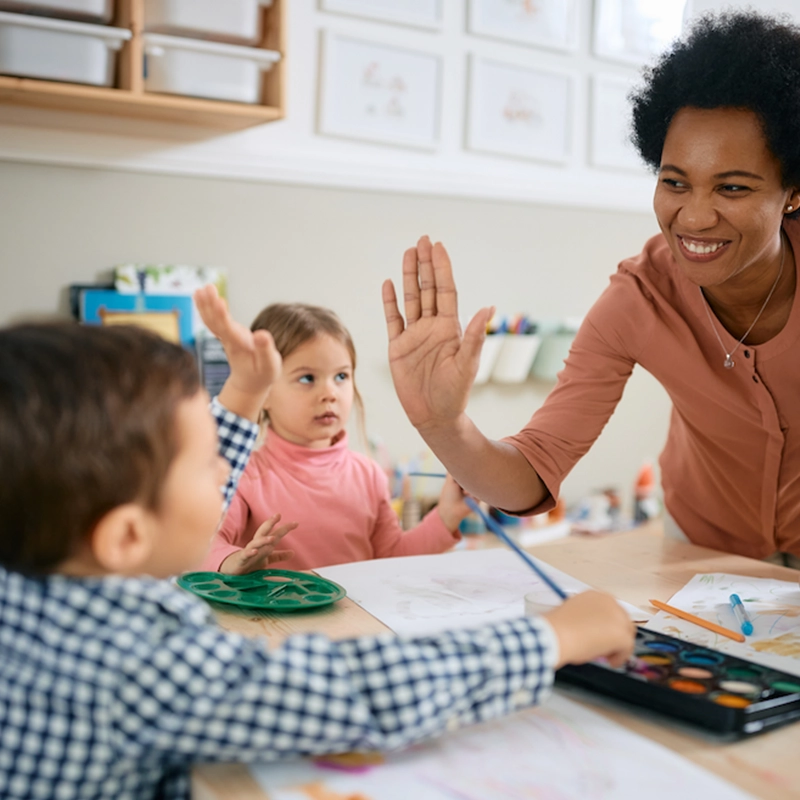
Curriculum Approaches & Educational Philosophies
Choosing a preschool curriculum isn’t about picking a label—it’s about finding a rhythm that matches your child’s curiosity and your own values. Over the years, many educational philosophies have shaped how we guide early learners. Each has its own focus, strengths, and feel.
Let’s take a look at several of the most common approaches and what they actually look like in practice.
Montessori Preschool Curriculum
The Montessori method centers around independence, order, and self-paced learning. Everything in the environment—from the shelves to the materials—is designed to help children do things for themselves.
What this might look like:
- A child pouring their own water into a glass instead of being handed a drink
- Quiet time with wooden number boards or letter tiles
- A child repeating the same task over and over, building focus
This approach works particularly well in preschool homeschool curriculum settings, where routines can be gently built around daily living. It’s ideal for children who enjoy calm, structured environments and learn best through doing.
Reggio Emilia Curriculum
If Montessori is about order, Reggio Emilia is about expression. This philosophy views children as full of ideas and capable of leading their own learning.
Instead of fixed lesson plans, teachers observe what sparks curiosity—maybe shadows, bugs, or building towers—and create projects around those themes. Classrooms are rich with natural light, art supplies, and photos documenting children’s thinking.
It often includes:
- Long-term group projects
- Artistic expression, like drawing, sculpting, or storytelling
- Teachers who ask questions instead of giving answers
It’s a great match for children who thrive in creative, social, and collaborative settings—and for educators open to flexibility.
Waldorf Preschool Curriculum
The Waldorf method values rhythm, imagination, and the natural world. There’s little to no direct academic instruction in the early years. Instead, learning happens through songs, stories, movement, and nature.
A typical day might include:
- Morning circle time with seasonal songs
- Bread baking or watercolor painting
- Long stretches of outdoor play in all weather
Waldorf classrooms feel warm, quiet, and almost magical. Toys are handmade, materials are natural, and screens are avoided. For families who prefer a slow, sensory-rich preschool experience, this approach often feels just right.
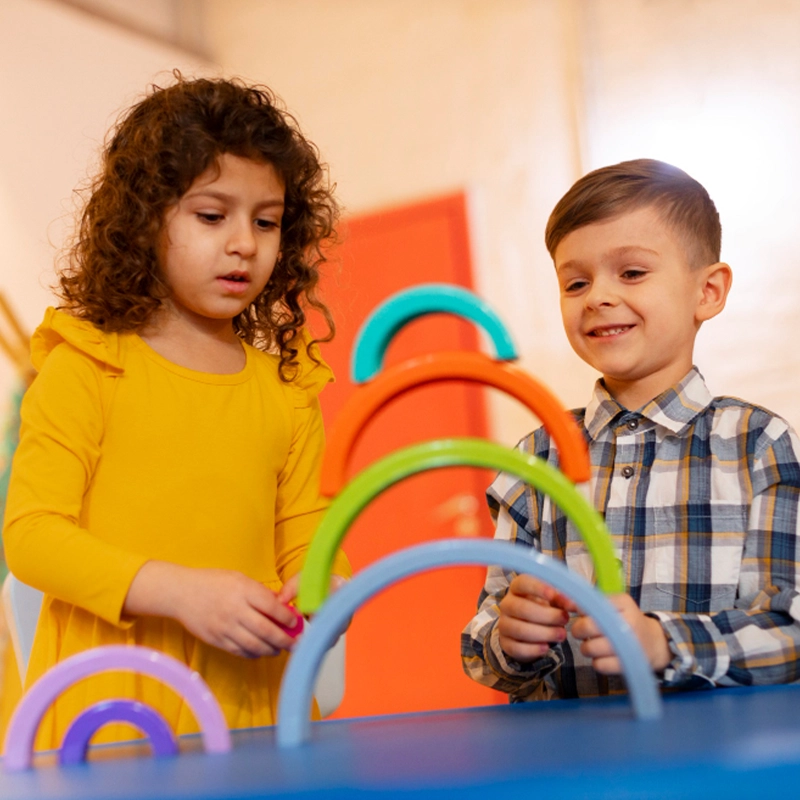

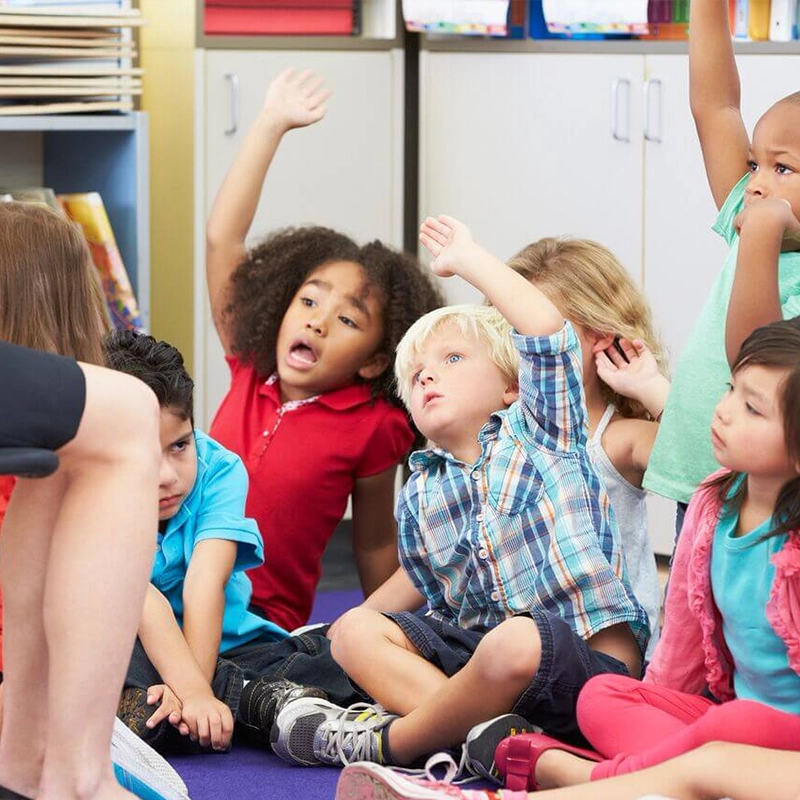
HighScope Preschool Curriculum
HighScope isn’t as widely talked about as Montessori or Reggio, but it’s one of the most research-supported preschool curriculum models out there. Designed for active learning, it gives children both structure and choice—two things young children thrive on.
At the heart of this method is the Plan-Do-Review cycle:
- Plan: Each child decides what they want to do, often with verbal or visual prompts.
- Do: They carry out their plan with materials in interest areas (blocks, pretend play, books, art).
- Review: They regroup and reflect—what they did, how it went, and what they’d change next time.
This reflection phase builds memory, vocabulary, and decision-making. The routine is predictable (which builds emotional security) but still child-driven (which boosts engagement).
In practice, a HighScope day may include choice time, small-group math games, guided reading, music, and outdoor exploration—all within a flexible, but intentional, schedule. For those building a preschool homeschool curriculum, HighScope ideas can help bring more clarity and consistency to child-led learning.
Charlotte Mason for Early Years
Charlotte Mason believed education is “an atmosphere, a discipline, a life.” Her philosophy is often seen in homeschool settings, where parents want something meaningful, natural, and gentle.
For preschool-aged children, her focus is simple:
- Read aloud living books—engaging stories, not dry fact summaries
- Build habits slowly: attention, kindness, neatness, patience
- Spend daily time in nature, observing and describing the world
- Keep lessons short, unpressured, and full of beauty
Instead of worksheets or “school-at-home,” you might curl up on the couch with a Beatrix Potter story, then go on a nature walk to sketch falling leaves. You might introduce composers, poetry, and picture studies—not to memorize facts, but to awaken curiosity.
This method has become part of many preschool homeschool curriculum kits, especially among families who value slow learning, moral character, and family rhythms over early academics.
Play-Based & Emergent Curriculum
A play-based preschool curriculum isn’t just “free play” all day. It’s a carefully prepared environment where teachers use play as the main tool for learning.
Let’s say children are building a fort with cushions:
- They’re practicing spatial awareness (math)
- Negotiating roles (social-emotional)
- Telling stories about dragons inside (language development)
- Balancing blocks or cutting flags (fine motor)
Play is real learning—especially when adults guide it gently, observe closely, and extend children’s thinking.
Now, an emergent curriculum goes one step further. It builds themes around what children are already interested in. For instance:
- A child finds a caterpillar → read The Very Hungry Caterpillar
- Do caterpillar crafts → count leaves and fruits from the story
- Observe real caterpillars → make lifecycle posters
This approach keeps learning deeply relevant. While it takes more planning and flexibility, it often leads to higher engagement and richer experiences. It’s especially popular in nature-based preschool curriculum, Reggio Emilia-inspired classrooms, and many progressive preschool homeschool curriculum setups.
Mix & Match Approaches in Real Life
Here’s the honest truth: most families and preschools don’t stick to just one curriculum style. And that’s okay—in fact, it’s often better.
You might start your day with a Montessori practical task, move into a Charlotte Mason read-aloud, follow up with HighScope choice time, and end with a Reggio-inspired nature project. That’s not disorganized—it’s customized.
Some of the best preschool homeschool curriculum kits today are actually blended. They pull structure from Montessori, curiosity from Reggio, and rhythm from Waldorf or Charlotte Mason. Others may pair play-based learning with formal math games or storytime.
If you’re creating your own preschool plan:
- Use your child’s interests as the foundation
- Pick methods that match your values and energy
- Be flexible—what works this month may shift next month
In the end, your preschool curriculum doesn’t need a fancy label. It needs to work for your real life, right now.
How to Choose an Approach That Fits
Every child is different, and no single curriculum works for everyone. That’s why many educators and parents find it helpful to see the strengths of each approach side by side. Below is a quick overview to help you understand which preschool curriculum methods might best suit your child’s learning style and your family’s values.
| Curriculum Approach | Best For | What It Might Look Like |
|---|---|---|
| Montessori | Independent learners who enjoy calm, order, and repetition | Self-directed work with hands-on trays, real-life tasks like pouring or cleaning, quiet concentration |
| Reggio Emilia | Curious, expressive children who ask lots of questions | Art projects, open-ended materials, long-term explorations based on children’s interests |
| Waldorf | Kids who thrive on routine, imagination, and nature | Storytelling, seasonal crafts, singing, daily rhythm, no screens |
| HighScope | Children who benefit from predictability and structured choices | “Plan-Do-Review” activities, clearly defined classroom zones, teacher-guided reflection |
| Charlotte Mason | Families who value quiet learning, nature, and beautiful books | Reading aloud, nature journaling, habit-building, short lessons filled with quality content |
| Play-Based / Emergent | Energetic, hands-on learners who explore freely | Pretend play, messy art, outdoor discovery, themes that follow children’s interests |
Many families blend different approaches based on what works day-to-day. You might have a Montessori-style shelf in the morning, read Charlotte Mason stories after lunch, and dive into a Reggio-inspired art project in the afternoon.
There’s no need to choose just one philosophy. What matters is finding what sparks joy and growth in your child.



Age-Based Curriculum Planning
There’s a big difference between a 2-year-old who’s just starting to speak in phrases and a 5-year-old who’s almost ready to read. That’s why even the best preschool curriculum needs to be adjusted to meet the developmental stage of each child.
Below is a breakdown of how curriculum goals and expectations typically shift between ages 2 to 5, along with practical ideas that match their unique needs and attention spans.
Preschool Curriculum for 2-Year-Olds
Two-year-olds are explorers. They touch everything, test boundaries, and are just beginning to form words and ideas. A preschool curriculum at this age should be simple, sensory-rich, and rooted in daily routines.
- Language exposure through songs, fingerplays, and picture books
- Sensory play (water tables, sand, playdough) to support brain development
- Social-emotional learning through turn-taking and naming feelings
- Gross motor activities like climbing, dancing, or pushing wagons
At this stage, Montessori preschool curriculum materials might involve simple tasks like transferring objects with spoons or matching shapes, while play-based preschool curriculum centers around free play and adult-facilitated interaction.
The goal? Build trust, joy, and a sense of belonging in a safe, engaging environment.
Preschool Curriculum for 3-Year-Olds
By age three, children are gaining language quickly, asking tons of questions, and beginning to play with—not just near—other kids. They’re ready for more guided learning, though still through play and routine.
A 3-year-old preschool curriculum might include:
- Early literacy games (rhyming, storytime, alphabet songs)
- Basic math through counting blocks, sorting by color/size, or puzzle play
- Daily read-alouds and open-ended art for expression
- Cooperative group play, circle time, and guided clean-up routines
This is the age where many parents begin structured homeschool preschool curriculum kits, or join toddler programs with gentle, Reggio-inspired or nature-based models.
Consistency matters here—simple daily rhythms help children feel secure and ready to explore.
Preschool Curriculum for 4-Year-Olds
Four-year-olds start to show stronger memory, longer attention spans, and early academic readiness. They also develop stronger friendships and are more capable of following group instructions.
Ideal activities at this age include:
- Phonics-focused storytime and letter tracing
- Math games involving numbers 1–10, patterns, and sequencing
- Science projects like planting seeds or basic sink/float experiments
- Storytelling, role-play, and emotional vocabulary building
- Movement games and early handwriting practice (e.g., tracing lines, drawing shapes)
Parents seeking a comprehensive homeschool preschool curriculum at this stage often look to programs like Abeka, The Good and the Beautiful, or Montessori-based systems that offer structured progression with flexibility.
Preschool Curriculum for 5-Year-Olds (Pre-K)
Five-year-olds are often in or nearing Pre-K (pre-kindergarten). Many are developmentally ready for early reading, handwriting, and problem-solving. They thrive on challenge and variety, but still need movement and creativity.
An effective Pre-K curriculum includes:
- Letter blends, beginning sight words, and early readers
- Writing simple sentences and personal stories
- Hands-on math with addition, subtraction, and visual problem solving
- Science observations and charting (weather, plants, animals)
- Music, drama, art, and cooperative projects
At this age, you’ll want a curriculum that prepares them for the routines and expectations of kindergarten, while still protecting their creativity and emotional health.
Whether you’re using a preschool curriculum at home or in a classroom, 5-year-olds benefit from more challenge—but not pressure.
How Developmental Needs Vary by Age
While preschool-aged children often share similar routines—storytime, play, art—their developmental needs shift dramatically from year to year. Understanding these shifts helps you choose activities and expectations that actually make sense for your child’s stage.
Here’s a quick look at how learning goals and support needs evolve from ages 2 to 5:
| Age | Key Developmental Needs | Sample Learning Focus |
|---|---|---|
| 2 Years Old | Emotional security, basic communication, sensory exploration | Naming objects and feelings, movement games, songs with gestures |
| 3 Years Old | Social interaction, fine motor coordination, language expansion | Group play, sorting and stacking, short books with repetition |
| 4 Years Old | Early academics, self-regulation, curiosity-driven questions | Letter sounds, pattern games, simple science activities |
| 5 Years Old | Structured learning, independence, pre-literacy and math | Journaling, number concepts, sight word recognition, collaborative projects |
Each year builds on the last—but no child develops in a straight line. Some four-year-olds are already reading; others are still mastering scissors. The point of any preschool curriculum isn’t to rush—it’s to meet your child where they are and grow from there.
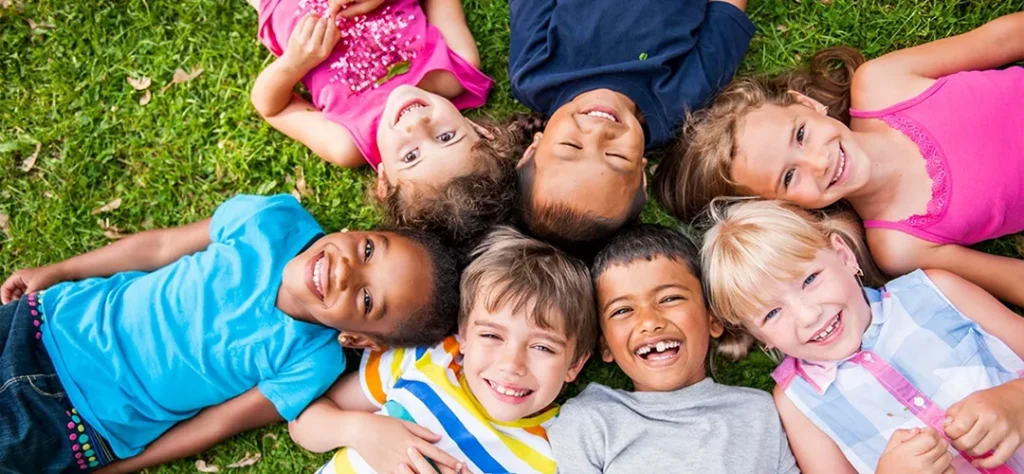
Common Mistakes & Misconceptions
Creating or choosing a preschool curriculum can feel exciting—but also overwhelming. And in that process, it’s incredibly easy to fall into traps that seem helpful on the surface… but actually get in the way of a child’s real growth.
Here are four common ways things go sideways—and what to do instead.
Mistake 1: Believing “earlier = better”
Let’s get this out of the way: just because your child can trace letters at age 3 doesn’t mean they should. A lot of parents (and schools) think preschool is all about giving their kids an academic edge. So they pile on phonics, math drills, handwriting worksheets, and early reading expectations.
But here’s the thing: rushing academics often backfires. A child who memorizes sight words before they understand the meaning of a story isn’t actually ahead—they’re overloaded. What’s missing is comprehension, emotional connection, and curiosity.
A good preschool curriculum doesn’t chase “results.” It builds a foundation: language, thinking, self-control, and problem-solving. These skills can’t be rushed with flashcards.
Mistake 2: Making it too tight… or too loose
There are two extremes here.
Some people follow rigid hourly schedules, rotating every 15 minutes like clockwork. Others go all-in on “free learning” with zero structure. Both lead to problems.
Children need rhythm. Not a military-style routine, but a predictable, safe flow they can trust. A good preschool day has both open-ended exploration and gentle boundaries:
“After snack, we’ll have circle time. After that, you can choose blocks or painting.”
If your preschool curriculum at home feels like chaos—or like a boot camp—it might be time to shift.
Mistake 3: Equating worksheets with learning
This one’s everywhere: colorful printable worksheets labeled “Preschool Curriculum” or “Pre-K Pack,” promising literacy and math readiness. But if the activity doesn’t connect with the child, it’s busywork.
Kids don’t learn best from paper. They learn from doing.
- Counting real apples > circling apples on a sheet
- Drawing with chalk > tracing with no purpose
- Talking about the weather > checking boxes
A worksheet can support learning—but it should never replace real-world, sensory-based experiences. Preschoolers need movement, conversation, and curiosity—not checklists.
Mistake 4: Thinking social learning is secondary
This is a subtle one. Even in thoughtfully designed preschool homeschool curricula, social and emotional learning sometimes gets sidelined:
“Let’s focus on letters now—we’ll deal with emotions later.”
But in early childhood, social learning is academic learning.
- A child who can take turns will participate better in group learning.
- A child who understands frustration will persevere through puzzles.
- A child who can express feelings clearly will build better friendships—and stronger language skills.
If your curriculum doesn’t intentionally build social learning in—through stories, role play, collaborative games—it’s missing the heart of early education.




FAQs
1. What exactly is a preschool curriculum?
It’s a structured plan that guides what children learn in areas like literacy, math, social skills, and creativity. A good preschool curriculum balances play and academics, tailored to early development.
2. Is play-based learning a real curriculum?
Yes—it’s one of the most developmentally appropriate approaches. A play-based preschool curriculum teaches problem-solving, language, and social skills naturally through exploration.
3. How is the Montessori preschool curriculum different?
Montessori emphasizes independence, hands-on materials, and quiet concentration. Children choose activities at their own pace, often in mixed-age classrooms.
4. What is the creative curriculum for preschool?
It’s a research-based framework focused on project-based learning, classroom routines, and intentional teaching. Often used in preschools and early education centers.
5. Can I combine different preschool curriculum styles?
Absolutely. Many families mix Montessori shelves, Charlotte Mason read-alouds, and Reggio Emilia-inspired projects. There’s no rulebook—only what fits your child.
6. What are some strong options for Christian or Bible-based preschool curriculum?
Abeka, Sonlight, and ABC Jesus Loves Me are popular choices. Many include preschool Bible curriculum as part of daily lessons or Sunday school themes.
7. How do I teach subjects like math or reading at this age?
Through everyday play: count blocks, sort snacks, match socks, and read rhyming books. Good preschool math curriculum and literacy activities are simple, fun, and physical.
8. Do I need curriculum kits or boxed programs?
Not unless you want them. Preschool curriculum kits are convenient but optional—you can build a great routine with books, crafts, and nature walks.
9. What role do parents play in a homeschool preschool curriculum?
You’re not just the teacher—you’re the model. Daily conversations, routines, and your enthusiasm shape how your child learns far more than worksheets.
10. Are seasonal or holiday themes useful in preschool learning?
Yes. Themes like winter, Thanksgiving, or gardening make the preschool curriculum more engaging and help children connect learning with the world around them.
Conclusion
The best preschool curriculum doesn’t come from a box. It grows from your child’s questions, your family’s rhythm, and the values you care about.
Whether you follow Montessori, play-based learning, or create your own blend, what matters most is that it feels doable, enjoyable, and connected to your child’s world.
Preschool isn’t about rushing into academics—it’s about building confidence, curiosity, and the joy of learning.
So choose the tools that support you, adapt when needed, and remember: your presence and patience matter more than any perfect plan.



